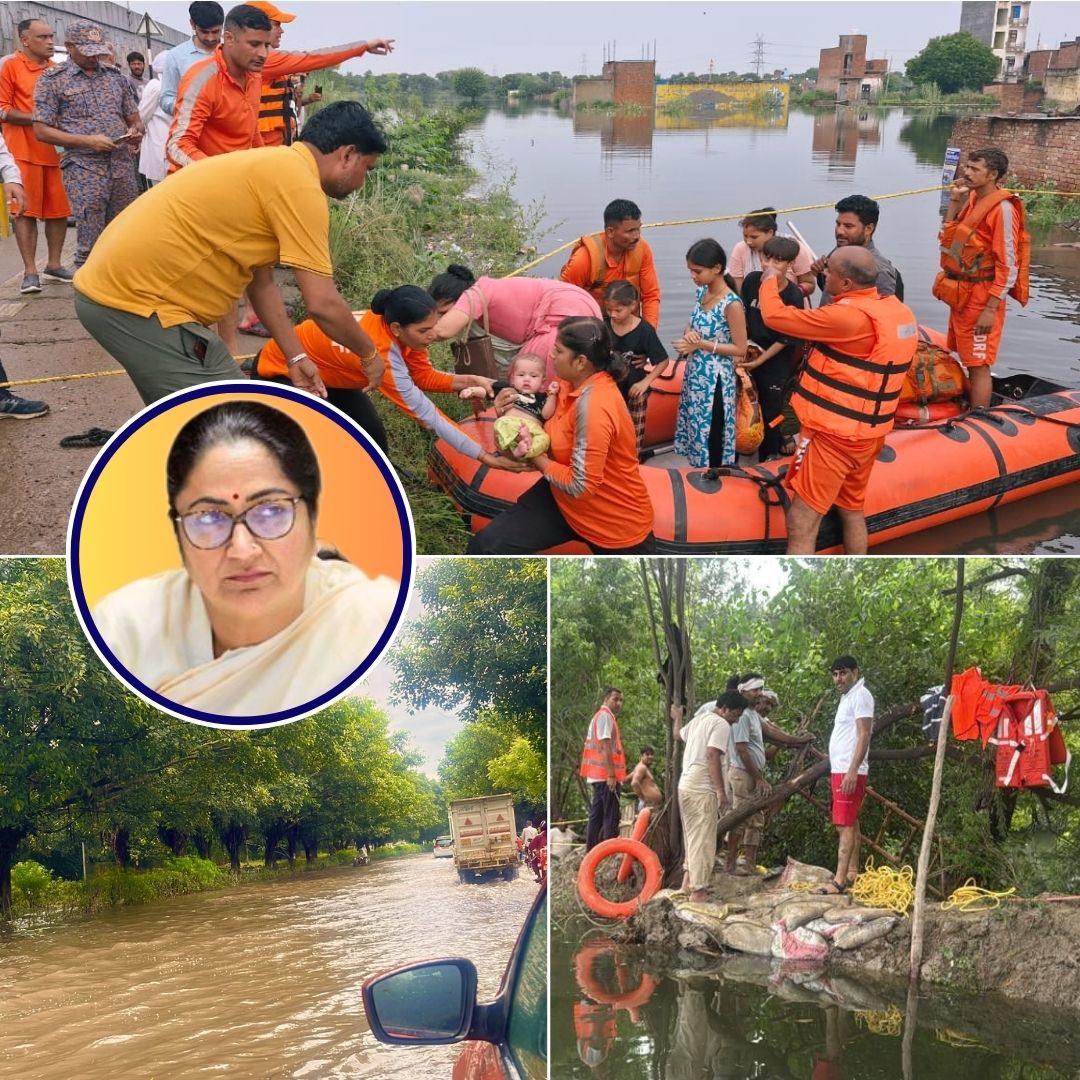The Yamuna river in Delhi surged to a historic level of 207.41 metres on September 3, 2025, making it the third-highest level recorded since data began in 1963. This unprecedented rise surpassed the danger mark of 205.33 metres and even exceeded the evacuation threshold of 206 metres.
By nightfall, the river swelled further to 207.43 metres, flooding low-lying areas such as Ring Road, Civil Lines, Bela Road, and Sonia Vihar. More than 12,000 residents were displaced as homes, markets, and important city zones were inundated. The floodwaters even entered the Nigambodh Ghat cremation ground, forcing a halt in cremations for safety reasons.
City roads faced severe waterlogging, causing traffic snarls and stranding commuters. Relief camps were rapidly set up at 38 locations, including Yamuna Khadar and Mayur Vihar, to provide shelter and aid to evacuees.
Causes and Official Responses
The flood surge was primarily caused by heavy monsoon rainfall in the region and the large discharge of around 1.75 lakh cusecs from multiple upstream barrages, including Hathnikund and Wazirabad. Complicating matters, a breach occurred in the Mungeshpur drain in southwest Delhi, deepening flooding in villages like Jharoda Kalan, forcing thousands into temporary shelters such as municipal schools.
Delhi’s Irrigation and Flood Control Minister, Parvesh Verma, urged calm, assuring citizens that significant river channel improvements and desilting in recent months had increased the Yamuna’s capacity. He confidently stated that even if the water level were to rise a metre or two more, Delhi’s authorised areas would remain safe from flooding, unlike the devastating floods of 2023.
Authorities proactively shuttered 13 regulator drains to prevent river backflow and installed hundreds of pumps, sandbags, and boats to manage the rising floodwaters.
Delhi Chief Minister Rekha Gupta actively responded to the Yamuna flood crisis by establishing close coordination with neighbouring Haryana. Late on September 2, 2025, she made a crucial phone call to Haryana Chief Minister Nayab Singh Saini to discuss the breach in the Mungeshpur drain that worsened flooding in Delhi’s border villages and unauthorised colonies.
She reassured Delhi residents that extensive preparations had been made over six months to strengthen flood defences and that the situation was under control despite the rising Yamuna levels.
भारी बारिश और अधिप्रवाह से मुंगेशपुर ड्रेन में दिल्ली सीमा से लगभग 1 किलोमीटर आगे झज्जर, हरियाणा क्षेत्र से लगते किनारे के कटाव से उत्पन्न हुई आपदा पर आधी रात को हरियाणा के माननीय मुख्यमंत्री श्री @NayabSainiBJP जी से फोन पर चर्चा की।
— Rekha Gupta (@gupta_rekha) September 3, 2025
दिल्ली और हरियाणा दोनों राज्यों के अधिकारी… pic.twitter.com/jozsPfILgg
Emergency Coordination and Human Impact
The flood emergency prompted swift coordination between Delhi’s administration, the National Disaster Response Force, and neighbouring Haryana officials to address breached drains and provide rescue operations. Over 14,000 people were evacuated from vulnerable zones across Delhi’s districts; many found refuge in relief camps offering food, medical support and shelter.
Additionally, the displacement impacted commercial activities and daily routines, with markets submerged and public transportation disrupted. In affected villages, authorities also evacuated livestock to prevent economic loss for the residents.
While the India Meteorological Department has forecast easing rainfall in the coming days, the immediate focus remains on managing floodwaters, repairing drainage breaches, and ensuring the safety of displaced communities.
The Logical Indian’s Perspective
This crisis underscores the critical need for sustainable urban development, thoughtful water management, and environmental stewardship in rapidly growing cities. The Logical Indian advocates for a compassionate, community-centric approach, where governments, civil society, and citizens work collaboratively to build resilient infrastructures and prepare adequately for natural disasters.
It is only through dialogue, empathy, and collective action that future tragedies can be mitigated, balancing human habitation with nature’s rhythms.
This unfolding flood episode in Delhi is a powerful reminder of the resilience required to face nature’s unpredictability and the urgency to act with foresight and kindness.
In Noida, And Delhi Mayur Vihar, Khadar & Pusta roads—hundreds of animals were trapped when the floods arrived. Many lives were at risk, but countless people came together, rescuing them and ensuring their safety.
— Vidit Sharma 🇮🇳 (@TheViditsharma) September 4, 2025
This is India. This is the spirit of India. In the darkest… pic.twitter.com/aO6cvi24tu
डूबी दिल्ली
— सुनील कुमार आलेडिया (@AlediaSunil) September 3, 2025
2023 से ज्यादा खतरनाक होगी दिल्ली की बाढ़
सरकार फेल, जनता मौन
आखिर कौन#DelhiFlood @NDRFHQ @LtGovDelhi @PMOIndia pic.twitter.com/SfTovnyEL1











